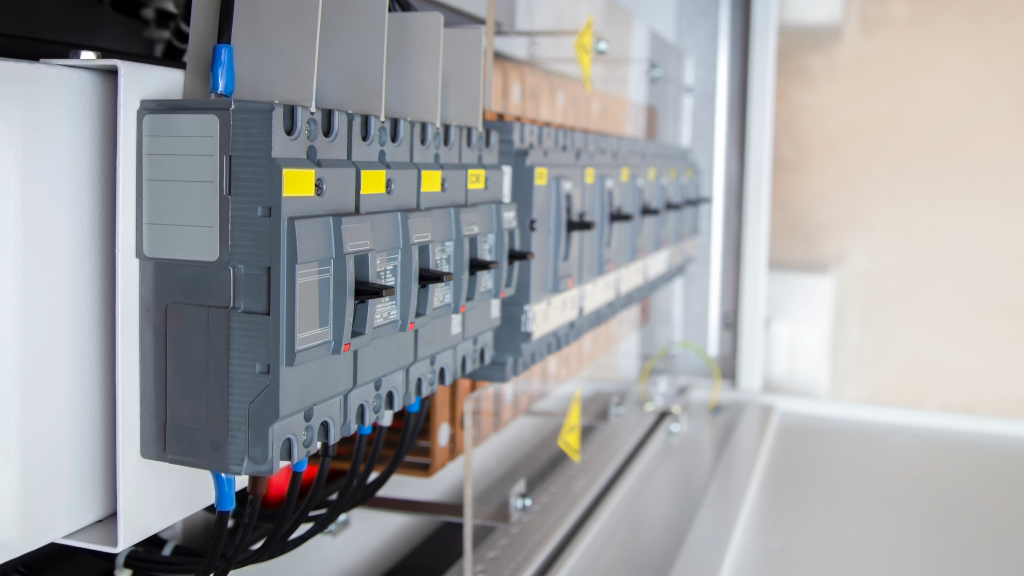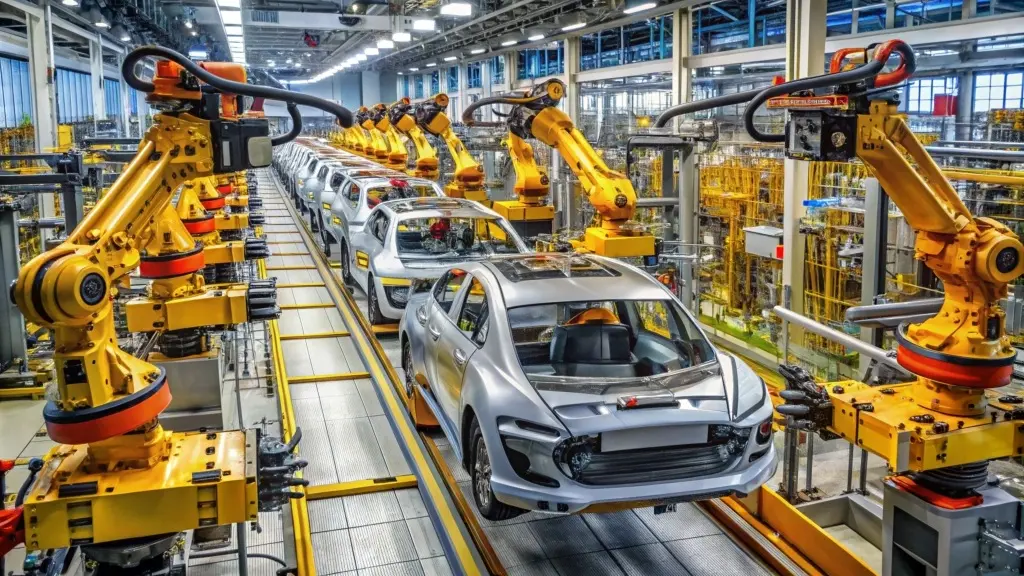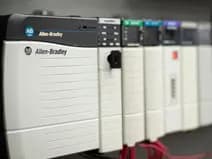Table of Content
Safety Relays in High-Risk Environments: A Complete Guide

Written by
Artur Solakhyan
Freelance copywriter and editor
Published at14 September 2025
Estimated reading time6 min read

Share This:
In industrial environments where machines operate at high speed, extreme pressure and temperatures, safety is not just an option, it’s a necessity. And safety relays play a critical role among the essential components that protect workers and equipment. These devices are designed to detect faults and initiate control measures to prevent possible harm. Whether it is a production line, a chemical processing facility or an automotive plant, safety relays effectively manage all the risks.
In this guide, you will find safety relays explained in detail, including their purpose, design, types and applications. We will also look into major global brands such as Allen-Bradley, ABB and Siemens, as well as specialized options from Pepperl+Fuchs and SEW-Eurodrive. If you’re wondering what safety relays are or looking for the answers to questions such as how safety relays work or where to purchase safety relays, this article will provide clear and practical insights.
What Are Safety Relays?

Safety relays are devices used to monitor safety-related inputs and control outputs. Unlike standard relays, a safety relay uses redundant and fault-detection circuits to ensure that the system reacts without delay when a dangerous condition occurs.
Key functions of safety relays include:
- Monitoring emergency stop buttons, light curtains and safety mats
- Detecting short circuits, wire breaks, or component failures
- Enforcing dual-channel input checks for redundancy
- Initiating controlled machine stoppages in case of danger
Safety relays make sure that a system fails predictably and securely, and reduce the possibility of accidents and equipment damage.
How Safety Relays Work
It is essential to know how safety relays work to understand their role in making high-risk environments safe. The operation typically includes three stages:
- Monitoring: safety relays continuously check the condition of safety inputs such as emergency stop buttons, gate switches, or pressure mats. If an unsafe event is detected, the relay triggers an immediate response.
- Fault Detection: unlike traditional relays, safety relays feature built-in diagnostic circuits. These circuits monitor wiring integrity, prevent bypasses and ensure redundancy. For example, if a wire breaks in one channel, the relay will detect the issue and block a restart.
- Control Action: once a fault or hazard is identified, the safety relay sends a signal to stop the machine, disconnect power, or trigger alarms. This ensures personnel are protected and equipment damage is minimized.
By combining detection and control, industrial safety relays ensure compliance with international standards such as ISO 13849-1 and IEC 62061.
Importance of Safety Relays in High-Risk Environments

Safety relays are not optional in hazardous industries. They are mandatory. Environments where heavy machinery, high voltage, or combustible materials are present require reliable fault-detection systems. A delayed reaction of even a second can result in severe injuries or costly downtime.
Industries where safety relays are essential include:
- Automotive assembly plants
- Food and beverage processing
- Oil, gas and chemical industries
- Pharmaceuticals
- Material handling and logistics
By integrating safety relays, organizations safeguard employees while maintaining operational efficiency. Moreover, they comply with occupational health and safety regulations, which require certified protective systems.
Safety Relays Explained by Leading Brands
Allen-Bradley Safety Relays
Allen-Bradley, part of Rockwell Automation, is a leading provider of industrial automation equipment. Their safety relays are known for reliability and compliance with safety standards. These devices are suitable for applications ranging from basic emergency stops to complex machine safety systems.
Some popular models include:
- Allen Bradley 440R-D23169: A compact relay designed for monitoring emergency stops and guard switches.
- Allen Bradley 700S-DCP1020DZ24: Offers diagnostic features for advanced applications.
- Allen Bradley 700S-CF440DC: Built for demanding industrial environments requiring high switching capacity.
For a complete overview of available models, see the Allen-Bradley safety relays section on BSP Automation.
Siemens Safety Relays
Siemens safety relays are designed to handle demanding industrial applications where downtime is not acceptable. Known for precision engineering and reliable performance, Siemens products integrate easily into modern control systems.
Key models include:
- Siemens 3RN1012-1CK00: Compact relay offering advanced monitoring functions.
- Siemens 3RN1000-1AB00: Designed for dual-channel safety input monitoring.
- Siemens SAM-20: Suitable for wide-ranging industrial safety applications.
Browse more in the Siemens safety relays catalog at BSP Automation.
ABB Safety Relays
ABB safety relays provide flexibility for both small and large-scale installations. Known for their modularity, these devices are widely used in packaging, robotics and process industries. ABB designs relays with configurable safety functions that allow easy adaptation to various risk levels.
Features include:
- Simple integration into existing control systems
- Multiple safety input monitoring options
- Support for global safety standards
While ABB models are not listed in detail here, BSP Automation supplies a wide range of ABB products suitable for diverse industries.
Pepperl+Fuchs Safety Relays
Pepperl+Fuchs specializes in explosion protection and safe solutions. Their industrial safety relays are often selected for use in oil, gas, and chemical applications where flammable materials are present.
Highlighted models include:
- Pepperl+Fuchs WE77/EX-UT-110/120V
- Pepperl+Fuchs WE77/EX-SH-03-115V
- Pepperl+Fuchs WE 77/EX-2 230V
Explore the complete Pepperl+Fuchs safety relays collection at BSP Automation.
SEW-Eurodrive Relays
SEW-Eurodrive is widely recognized for its drive technology, but the company also produces specialized relays. These devices are designed to support motor control systems and industrial automation lines.
Available models include:
- SEW-EURODRIVE 8267596
- SEW-EURODRIVE 08267596
For more details, see the Sew-Eurodrive relays category on BSP Automation.
Applications of Safety Relays

Safety relays are found in virtually every industry where machine hazards exist. Their adaptability makes them indispensable for protecting both people and processes, from heavy industrial plants to compact automated cells. By ensuring consistent and reliable shutdowns, they form the foundation of safe machine operation.
Key applications include:
- Emergency stop systems: ensuring the immediate shutdown of the machine when emergency stop buttons are pressed. Safety relays guarantee that the signal is acted upon instantly, disconnecting power to dangerous moving parts and preventing injuries even in complex multi-machine setups.
- Access control: preventing machinery from operating when protective doors or gates are open. These relays monitor door switches and interlocks, ensuring machines cannot restart until guards are securely closed. This is especially crucial in the packaging, automotive, and food processing industries.
- Light curtain monitoring: detecting movement within dangerous zones. Safety relays evaluate signals from light curtains and ensure that any intrusion into a restricted area immediately halts hazardous operations. This minimizes the risk of accidental entry during machine cycles.
- Two-hand control systems: requiring both hands to activate machinery, preventing accidental activation. Safety relays ensure both buttons are pressed simultaneously, making it impossible for one hand to operate controls while the other is near dangerous components.
- Motor safety: Protecting motor-driven systems from unexpected restarts or overload conditions. Safety relays detect irregular conditions and shut down drives, reducing risks of entanglement and equipment damage. They also integrate with motor starters to provide controlled restarts only when conditions are safe.
By providing these protective layers across multiple functions, safety relays not only enhance workplace safety but also minimize unplanned downtime, safeguarding both workers and machinery.
Choosing the Right Safety Relay
Selecting a safety relay depends on multiple factors, including the type of machine, the level of risk and industry standards. Each application requires careful evaluation to ensure compliance and reliability, as the wrong choice could compromise safety or efficiency.
Consider the following points:
- Input devices: determine whether you need monitoring for emergency stops, safety mats, or two-hand controls. Each input type requires compatible relay logic to ensure correct fault detection. For example, large conveyor systems may demand multiple e-stop inputs distributed across the machine.
- Redundancy requirements: higher-risk environments may require dual-channel or multiple safety circuits. A dual-channel relay provides redundancy, ensuring that if one channel fails, the other can still trigger a safe shutdown. This redundancy is essential in sectors where downtime could lead to catastrophic outcomes.
- Integration needs: check compatibility with existing PLCs or automation systems. Modern safety relays often communicate with standard PLCs, but integration details differ across brands. Ensuring smooth connectivity helps avoid costly rewiring or unexpected incompatibilities.
- Environmental conditions: for industries with explosive atmospheres, select intrinsically safe models, such as Pepperl+Fuchs relays. In contrast, environments with high vibration, moisture, or dust may require sealed or reinforced housings to guarantee reliable operation.
For expert assistance, BSP Automation, as an experienced industrial parts supplier, guides to ensure the right choice is made. Their catalog covers multiple leading brands, making it easier to match relays with exact application demands.
Compliance and Standards
Safety relays are designed in compliance with global safety standards that define how machinery should respond under fault or hazard conditions. Adhering to these frameworks ensures that relays are not only practical but also legally acceptable for use in international markets.
Key standards include:
- ISO 13849-1: Safety of machinery and performance levels. This standard specifies categories and performance levels for control systems, defining the reliability required for a safety relay in a given application. Higher performance levels require relays with redundancy and diagnostic coverage.
- IEC 62061: Functional safety of safety-related control systems. It provides guidance for integrating safety relays into wider systems, focusing on the reliability of electrical and electronic control systems. Relays must meet these requirements to ensure predictable behavior during faults.
- EN 60947-5-1: Low-voltage switchgear and control gear. This standard governs the design and performance of electromechanical control devices, including relays, ensuring they meet durability and functional benchmarks.
By ensuring compliance with these and other global standards, organizations avoid legal penalties, achieve certification in regulated markets, and maintain safer workplaces. Aligning with international best practices also simplifies machine exports, as certified equipment can be used across multiple countries without additional testing.
Common Mistakes When Using Safety Relays
While safety relays are reliable, mistakes during installation or use can compromise their effectiveness. Many failures in industrial safety systems are not caused by the relays themselves but by how they are wired, configured, or maintained.
Frequent errors include:
- Bypassing safety inputs to maintain production speed. Operators sometimes override inputs to prevent frequent stoppages, which completely negates the purpose of the safety relay. This not only endangers workers but also exposes companies to liability and compliance violations.
- Using incorrect wiring or neglecting dual-channel connections. Improper wiring can result in relays not detecting faults. Dual-channel configurations are specifically designed to detect short circuits or disconnections, and neglecting them weakens system integrity.
- Failing to test relays regularly for functional integrity. Safety relays must be tested at defined intervals to ensure their contacts and logic function as intended. Skipping these checks risks having a system that appears active but will not respond correctly in an emergency.
- Choosing the wrong relay type for the application. For example, using a basic emergency stop relay in a system that requires multi-function monitoring can lead to insufficient protection. The result is reduced effectiveness and higher risks.
Avoiding these mistakes ensures that safety systems perform as intended, extend the life of critical components and maintain compliance with regulatory standards. Proper installation, testing and correct product selection are vital steps toward a safer and more productive operation.
Conclusion
Safety relays are crucial for industrial protection systems. They provide reliable fault detection, ensure compliance with global safety standards and most importantly, protect human lives in high-risk environments. Whether you are integrating Allen-Bradley safety relays, Siemens safety relays, or specialized models like Pepperl+Fuchs safety relays, selecting the right product is vital.
BSP Automation offers a complete portfolio, from general-purpose relays to highly specialized explosion-proof models. By choosing the right relay and working with a trusted industrial parts supplier, businesses can maintain operational efficiency while ensuring safety at every stage of production.
FAQ
Latest Articles

SEW-EURODRIVE Products Selection Guide29 September 2025

Understanding the Allen-Bradley Product Ecosystem12 August 2025

Allen-Bradley PLC Types: A Comprehensive Guide27 July 2025
Have a question?
If you didn't find the automation part you were looking for, our support team is here to help. Just contact us, and we'll do our best to source the exact part you need. We're committed to meeting your needs and ensuring your satisfaction.

